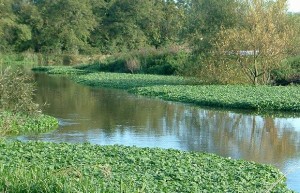 After 15 years, the Philippines has successfully received inscription for another site to the World Heritage List of the United Nations Educational, Scientific, and Cultural Organization (UNESCO). Joining the five other UNESCO cultural and natural sites of the Philippines is the Mount Hamiguitan Range Wildlife Sanctuary in Davao Oriental, which is noted for its rich biodiversity. It is the first UNESCO heritage site for Mindanao.
After 15 years, the Philippines has successfully received inscription for another site to the World Heritage List of the United Nations Educational, Scientific, and Cultural Organization (UNESCO). Joining the five other UNESCO cultural and natural sites of the Philippines is the Mount Hamiguitan Range Wildlife Sanctuary in Davao Oriental, which is noted for its rich biodiversity. It is the first UNESCO heritage site for Mindanao.
However, fear of a new threat seems to be disturbing the preservation of this newly inscribed site. One of the issues the mountain is facing today is biological piracy which is now happening all over the world according to conservation experts. An incident that happened in 2005 reminds scientists that biological samples including plants could be transferred to another part of the world and propagated. In 2005, scientists entered another site in the Philippines and collected species samples. They then propagated and cultured the samples in Europe and that is why the Nepenthes hamiguitanensis is already thriving in Europe today. They’re still naming it as such but it is no longer endemic to the Philippines according to the reports by the officials. That is why today another province has restricted access by foreign scientists to Mt. Matalingahan, another Philippine natural site being considered for UNESCO heritage listing.
Mindanao was cited under Criterion 10 of the heritage list which is supposed to contain the most important and significant natural habitats for in-situ conservation of biological diversity, including those containing threatened species of universal outstanding value from the point of view of science or conservation. This criterion refers to the rarity of the site. According to the officials in the Philippines, the mountain has many site-endemic flora and fauna species. Nepenthes (pitcher plant) and certain butterfly species can only be found there. It is also home to the Philippine Eagle and Philippine Cockatoo.
The mountain was supposed to be inscribed last year during the World Heritage Convention in Cambodia but it lacked the required Visitors Management Plan. The document was completed and submitted in this year’s convention in Qatar. Owing to its rich biodiversity, access to Mount Hamiguitan is restricted to scientists and researchers. However, another adjacent location will be developed as the buffer zone for tourists to view the mountain from afar as reported by the news outlets.















